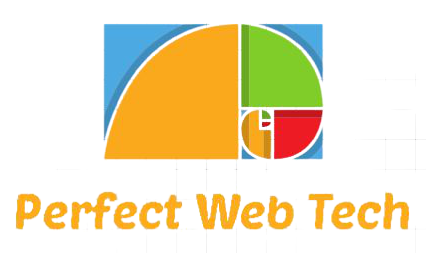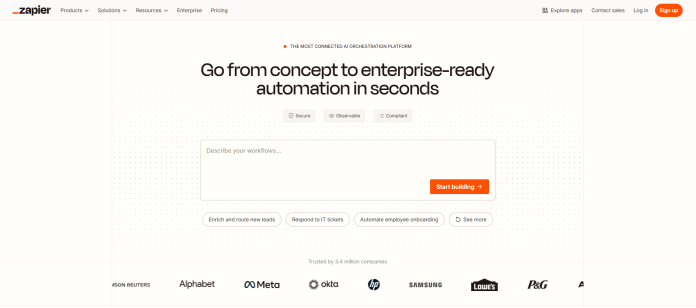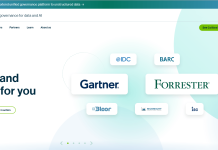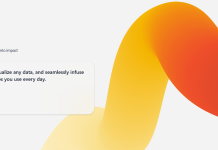Running a business without automation in 2025 is like trying to compete in Formula 1 with a bicycle. After testing dozens of platforms and implementing automation workflows for over 100 companies, here are the business automation software tools that actually deliver results.
1. Zapier
Zapier remains the undisputed king of workflow automation software for enterprises and small businesses alike. With over 6,000 app integrations (not 5,000 as commonly reported), it connects virtually every tool in your tech stack.
Key strengths:
– No-code interface that non-technical team members can master in under 2 hours
– Multi-step Zaps allow complex workflows up to 100 steps
– Built-in formatter and filter tools eliminate the need for additional middleware
Pricing reality check: The free plan covers 100 tasks/month with 5 Zaps. Most small businesses need the Professional plan at $49/month for 2,000 tasks. Don’t believe the “$19.99” marketing—that’s annual billing only.
Best use case: Connecting your CRM to email marketing, project management, and accounting tools. One client reduced manual data entry by 15 hours weekly by automating lead flow from website forms through their entire sales pipeline.
Limitation to consider: API rate limits can cause delays during high-volume periods. Plan workflows accordingly, especially for time-sensitive operations.
2. Microsoft Power Automate
Power Automate excels when you’re already invested in the Microsoft ecosystem. Unlike standalone business process automation software tools, it leverages existing Office 365 permissions and security protocols.
Core advantages:
– Pre-built templates for common business processes (invoice processing, employee onboarding, document approval)
– AI Builder lets you add OCR and sentiment analysis without coding
– Desktop flows automate legacy applications that lack APIs
The premium per-user plan ($15/month) includes 5,000 cloud flows runs. Compare this to similar enterprise automation platforms charging 3-4x more.
Real-world application: A logistics company automated their purchase order system, reducing processing time from 48 hours to 4 hours. The key was Power Automate’s ability to extract data from PDF invoices using AI Builder, then populate their SharePoint-based tracking system.
Watch out for: Complex flows can become difficult to debug. Microsoft’s error messages aren’t always helpful, so build in logging from the start.
3. ActiveCampaign
While marketed as email marketing software,ActiveCampaign is actually one of the most sophisticated marketing automation software for businesses under 500 employees.
Beyond basic automation:
– Predictive sending uses machine learning to email contacts at optimal times
– Lead scoring automatically updates based on email engagement and site behavior
– Split automations test different message sequences in real-time
The Plus plan ($49/user/month for 3 users minimum) includes the CRM, making it cost-effective compared to separate tools.
Proven impact: E-commerce clients typically see 20-30% revenue increase within 6 months through abandoned cart automation and post-purchase sequences. The platform’s attribution reporting shows exactly which automations drive sales.
Hidden gem: The Conversations feature creates chatbots that qualify leads before passing to sales. This alone can replace tools like Drift or Intercom for many businesses.
4. Cflow
Cflow targets mid-market companies needing business automation software with AI integration but without enterprise complexity. It’s particularly strong for approval workflows and compliance tracking.
Standout features:
– Visual workflow builder with drag-and-drop logic gates
– Audit trails satisfy SOC 2 and ISO compliance requirements
– Mobile app actually works (unlike many competitors whose mobile versions are afterthoughts)
Pricing starts at $12/user/month with no minimum users—refreshing transparency in a market full of “contact us” pricing.
Deployment example: A healthcare provider automated patient intake across 5 locations. Forms route automatically based on insurance type, with escalations for special cases. Processing time dropped from 3 days to same-day.
Consider carefully: Limited third-party integrations compared to Zapier or Make. You’ll need their API for custom connections.
5. Make (formerly Integromat)
Make offers more technical power than Zapier at lower costs, making it ideal as no-code business automation platforms for technical teams.
Technical advantages:
– Data transformation tools handle JSON, XML, and CSV without external processing
– Error handling with automatic retries and alternative path routing
– Real-time webhooks process events instantly vs. polling intervals
The free plan includes 1,000 operations—10x more generous than Zapier’s free tier.
Advanced use case: A SaaS company built their entire customer onboarding flow in Make. New signups trigger: Stripe subscription creation, Slack notification, CRM record creation, personalized email sequence, and calendar booking for onboarding call. Total cost: $9/month vs. $200+ for similar functionality elsewhere.
Learning curve warning: The interface intimidates non-technical users. Budget time for training or designate a “Make expert” on your team.
6. Nintex
Nintex bridges the gap between simple automation tools and complex enterprise platforms. It’s one of the few affordable business automation software options that includes RPA (Robotic Process Automation).
Enterprise features without enterprise prices:
– Process mapping tools document workflows before automation
– RPA bots interact with desktop applications lacking APIs
– Advanced analytics show bottlenecks and optimization opportunities
Nintex doesn’t publish pricing, but expect $30,000-50,000 annually for 50 users based on recent implementations.
Success story: A government agency automated permit applications using Nintex RPA to extract data from legacy systems. Processing time reduced from 2 weeks to 2 days, with accuracy improving from 92% to 99.7%.
Reality check: Implementation typically takes 3-6 months with consultant support. This isn’t plug-and-play software.
7. Buffer
Buffer remains the best business automation software for remote teams managing social media. While simpler than enterprise tools like Sprinklr, it handles 90% of what most businesses need.
Practical features:
– Pablo creates branded images in seconds (no more waiting for designers)
– Reply management across all platforms from one inbox
– Analytics show actual engagement, not vanity metrics
The Team plan ($6/channel/month) includes everything most businesses need.
Measurable results: Clients typically reduce social media management time by 70% while increasing posting consistency. The Start Page feature creates a branded link-in-bio that actually converts (3-5% CTR vs. 1-2% for standard bio links).
Missing piece: No built-in social listening. You’ll need additional tools to monitor brand mentions.
8. Xero
Xero automates financial processes beyond basic bookkeeping. For businesses outgrowing QuickBooks, it’s often the best business automation software for small business financial operations.
Automation highlights:
– Bank reconciliation uses machine learning to categorize transactions
– Recurring invoices generate and send automatically
– Expense claims process via mobile photo capture
At $15-78/month depending on features, it’s competitively priced for the functionality.
Time savings example: A marketing agency automated their entire billing workflow. Timesheets feed into invoices, which generate automatically on the 1st, with payment reminders at 7, 14, and 30 days. Collection time improved from 45 to 22 days average.
Integration bonus: Native connections to 1,000+ apps through their marketplace mean less reliance on Zapier for financial workflows.
9. Intercom
Intercom transcends basic chat widgets to become comprehensive business process automation tools for customer communication.
Beyond chat support:
– Product tours guide users through features, reducing support tickets by 30-40%
– Resolution Bot answers common questions using AI, handling 50% of inquiries
– Outbound messages target users based on behavior, not just demographics
Starting at $39/month, though realistic pricing for most businesses is $200-500/month with add-ons.
ROI example: A software company reduced support team size from 8 to 5 people while improving response time from 4 hours to 15 minutes. The key was automating tier-1 support and routing complex issues to specialists.
Vendor lock-in alert: Migrating away from Intercom is painful. Their data structure makes it difficult to preserve conversation history in other platforms.
10. Calendly
Calendly seems simple but becomes powerful cloud-based business automation platforms when properly configured. It eliminates the scheduling dance that wastes 5-8 hours weekly for most professionals.
Advanced capabilities:
– Routing forms direct meetings to appropriate team members
– Payment collection for consultations (Stripe/PayPal integration)
– Workflow automation triggers Zapier/webhooks after bookings
Teams plan ($16/user/month) necessary for most business use cases.
Productivity gain: Sales teams report 30% more meetings booked when using Calendly links vs. traditional back-and-forth. The psychological friction of scheduling disappears.
Professional tip: Create different event types for different funnel stages. Qualified leads get immediate availability; tire-kickers see limited slots 2 weeks out.
11. Appian
Appian represents the future of business automation software comparison 2025—low-code platforms that business users can customize without IT dependency.
Platform capabilities:
– Process mining discovers automation opportunities from system logs
– Intelligent document processing handles unstructured data
– Case management supports dynamic, exception-based workflows
Pricing starts around $75/user/month but requires minimum platform fees of $2,000/month.
Transformation case: A insurance company rebuilt their claims process in Appian. Adjusters now handle 3x more claims with improved accuracy. The key was automating document extraction and validation while keeping humans in the loop for decisions.
Implementation reality: Despite “low-code” marketing, expect 6-12 months and consultant support for meaningful deployments.
Selection Criteria
Choose your business automation software based on:
Integration needs: Count your existing tools. Over 10? Prioritize Zapier or Make. Under 5? Specialized tools might suffice.
Team technical skills: Non-technical teams succeed with Zapier, Buffer, Calendly. Technical teams extract more value from Make, Nintex, Appian.
Budget reality: Include implementation costs. Free trials don’t reflect real costs—most businesses need paid tiers immediately.
Quick Implementation
Start with one process that:
– Happens daily
– Takes 30+ minutes
– Follows consistent rules
– Involves 2+ systems
Automate this first, measure results, then expand. Most businesses try automating everything simultaneously and accomplish nothing.
Test during free trials with real data and real workflows. Pretty demos with sample data won’t reveal limitations.
Begin with the tool that solves your biggest pain point today. Perfect automation tomorrow beats partial automation never.
















